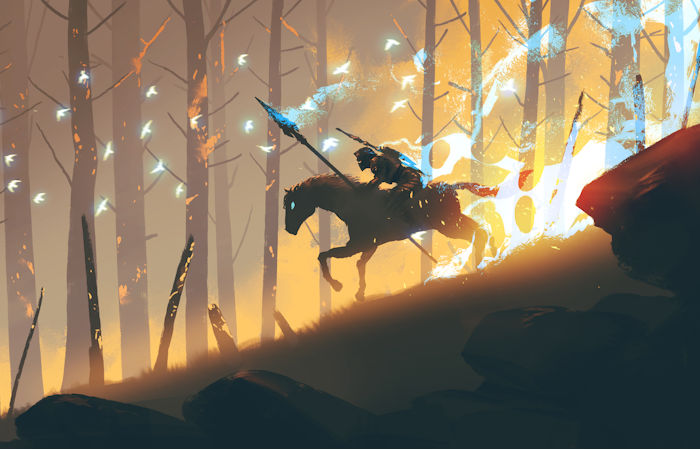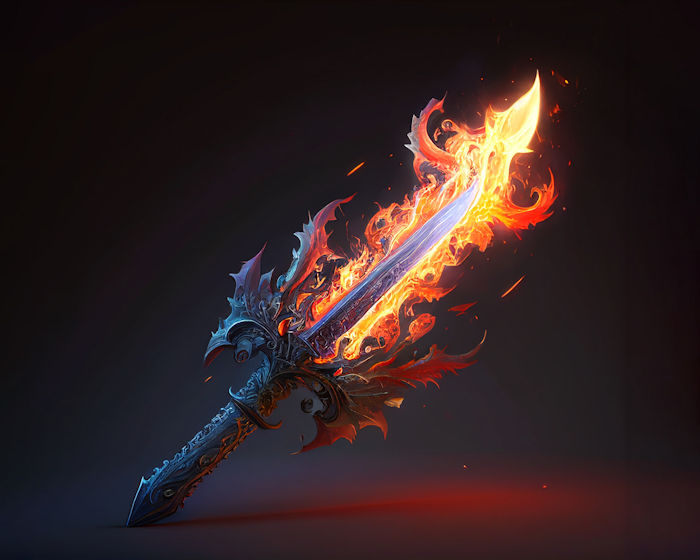Four Magical Treasures Of Tuatha De Danann
A. Sutherland - AncientPages.com - Thousands of years ago, a god-like race known as Tuatha de Danann - the people of the gods of Dana as they were called - came through the air to Ireland.
The arrival of Tuatha de Danaan. Credit: Adobe Stock - danielegay
They came from the north, where they had four cities located on four islands in the North. In these legendary cities - great Falias, shining Gorias, Finias, and rich Murias located to the south - Tuatha de Danann fought their battle for learning.
They brought to Ireland four magical treasures mentioned in early Irish literature.
In "The story of the Tuatha de Danaan," Lady I. A. Gregory writes that "in those cities they had four wise men to teach their young men skill and knowledge and perfect wisdom: Senias in Murias; and Arias, the fair-haired poet, in Finias; and Urias of the noble nature in Gorias; and Morias in Falias itself. And they brought from those four cities their four treasures: a Stone of Virtue from Falias, that was called the Lia Fail, the Stone of Destiny; and from Gorias they brought a Sword; and from Finias a Spear of Victory; and from Murias the fourth treasure, the Cauldron that no company ever went away from unsatisfied..." 1
However, some sources state that Tuatha de Danann brought the treasures from the Celtic Otherworld. Each one of the sacred items was unique, identified with an element, and possessed magical powers.
According to a late medieval Irish manuscript, "Yellow Book of Lecan" (1391 and 1401), the four treasures were: Lia Fáil Stone, the Spear of Lugh, the Sword of Nuada, and the Cauldron of the Dagda.
Stone Of Fál (Lia Fáil)
The Stone of Destiny (Lia Fáil) at the Hill of Tara, once used as a coronation stone for the High Kings of Ireland. Image credit: August Schwerdfeger - CC BY 4.0
From Falias was brought the stone of Fal (Lia Fal) - the stone of Destiny, which was believed to be located near the hill of Tara in County Meath and called the name of every king of Ireland. It was also claimed to keep Ireland above the waves and sea level. The master of his wisdom was Morfessa (or Fessus) of Falias.
The Lia Fáil was thought to be magical: when the rightful High King of Ireland put his feet on it, the stone was said to roar in joy. The stone could also rejuvenate the king and endow him with a long and successful reign. According to Lebor Gabála Érenn, (literally "The Book of the Taking of Ireland"), known in English as The Book of Invasions, Cúchulainn split it with his sword when it failed to cry out under his protégé, Lugaid Riab nDerg; also a legend says that it happened once again at the coronation of Brian Boru in 1002.
Sword Of Lugh - "Invincible Spear”
The second treasure of the Danaans was the invincible sword of Lugh of the Long Arm, which came from the city of Findias. It was also called the “Spear of Victory” and was identified with fire. It had properties similar to the Sword of King Nuada – when thrown, it momentarily hit its target.
Invincible Spear of Lugh. Credit: Adobe Stock - Vector Tradition
Lugh's magical weapons had special powers. Credit: Adobe Stock - grandfailure
However, Lugh possessed not only the Invincible Spear but also several magical weapons. It is said that the Lugh's Spear never missed its target and was so bloodthirsty it would often try to fight without anyone wielding it. The weapon was blazingly hot and became hotter the longer it was used. It was stored in a vat of water at night to keep it from catching fire and scorching the earth.
The Lugh of the Long Arms (sometimes, “Long Hands” or even “Artful Hands”) was the Celtic sun god associated with crafts and smiths, who worked with fire, and his weapons were considered to have magical powers.
The Blacksmith of Falias forged the magical spear for Lugh to use against Balor. The one who held it won every battle – neither the army nor the hero ever resisted it.
Sword Of Nuada - "Shining Sword"
This magical weapon, known as the "Sword of Light" (claideb/claiomh solais) is also one of the lost Four Treasures of Tuatha de Danann. It was made in the northern city of Gorias, one of Tuatha de Danann's legendary cities, ruled by a master of wisdom, Uiscas, who crafted the sword.
No one ever escaped from it once it was drawn from its sheath, and no one could resist it. The Tain legend also describes the sword as "Nuadu's Cainnel"—a glowing bright torch.
The shining sword of King Nuada. Credit: Adobe Stock - Eduardo
The sword was brought to Ireland by King Nuada of the Tuatha de Danann, who became famous when he led his people in the Battle of Moytura (Cath Maige Tuired, meaning ‘the plain of pillars/ towers’) against the Fir Bolg, who ruled Ireland at the time. We do not know the true meaning of the magical "Sword of Nuada." Still, based on some interpretations and the sword's obvious abilities (stabbing, cutting, slicing), it may symbolize justice, law, and truth.
It can also mean the punishment of Ireland’s enemies during the conflict.
However, the sword's light or shining can be considered as "enlightenment, illumination ": sacred wisdom and knowledge.
The Cauldron Of The Dagda
Celtic myths and legends mention many magic vessels. One known as the "Cauldron of the Dagda" or the Cauldron of Plenty, or Undry, was a magical vessel that never ran dry because it was bottomless. It provided a never-ending supply of food and drink to all who deserved it. It was also a great treasure of the Tuatha Dé Danann.
The magical cauldron of Dagda was never empty. Credit: Adobe Stock - Natalia
The magical cauldron, which was the fourth treasure of Tuatha de Danann, also had another ability; it could revive dead warriors. Therefore, it served as a tool to provide rebirth and regeneration. The Cauldron of Dagda - made in the city of Murias - was one of the special attributes of Dagda - "Good God" (also "Great Father' and the "Mighty One of Knowledge." Dagda was considered the greatest of the Irish gods.
It was said that no company ever went away from Cauldron (coire) of the Dagda unsatisfied.
Updated on January 12, 2024
Written by – A. Sutherland AncientPages.com Staff Writer
Copyright © AncientPages.com All rights reserved. This material may not be published, broadcast, rewritten or redistributed in whole or part without the express written permission of AncientPages.com
Expand for references- Lady I. A. Gregory, The story of the Tuatha de Danaan
Daimler M., The Treasure of the Tuatha De Danann
Trident Books, Irish Gods
More From Ancient Pages
-
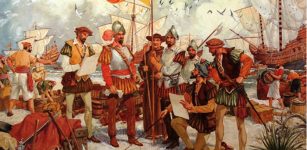 Luna Settlement: First Multi-Year European Settlement Identified In Pensacola, Florida
Archaeology | Dec 26, 2015
Luna Settlement: First Multi-Year European Settlement Identified In Pensacola, Florida
Archaeology | Dec 26, 2015 -
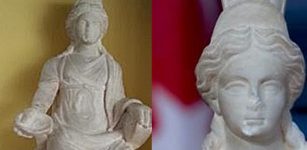 Statue Of Goddess Cybele Looted In The 1960s Returned To Turkey
Artifacts | Dec 22, 2020
Statue Of Goddess Cybele Looted In The 1960s Returned To Turkey
Artifacts | Dec 22, 2020 -
 Vast Network Of Previously Unknown European Bronze Age Megastructures Discovered
Archaeology | Nov 20, 2023
Vast Network Of Previously Unknown European Bronze Age Megastructures Discovered
Archaeology | Nov 20, 2023 -
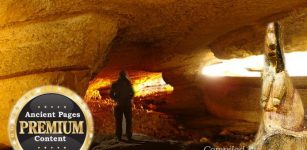 A Scientist’s Powerful Dream Revealed An Extraordinary Archaeological Discovery
Ancient Mysteries | Jan 25, 2019
A Scientist’s Powerful Dream Revealed An Extraordinary Archaeological Discovery
Ancient Mysteries | Jan 25, 2019 -
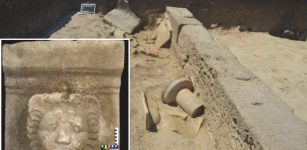 Outstanding Unfinished Ancient Marble Carving Of A Lion’s Head Found Near Selinunte, Sicily
Archaeology | Sep 2, 2023
Outstanding Unfinished Ancient Marble Carving Of A Lion’s Head Found Near Selinunte, Sicily
Archaeology | Sep 2, 2023 -
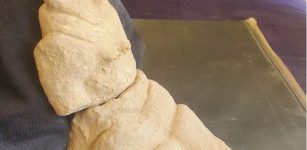 8,000-Year-Old Yarmukian ‘Mother Goddess’ Figurine Discovered In Israel
Archaeology | Jul 18, 2022
8,000-Year-Old Yarmukian ‘Mother Goddess’ Figurine Discovered In Israel
Archaeology | Jul 18, 2022 -
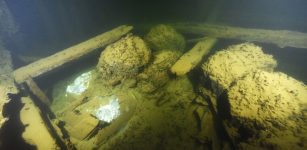 Two Well-Preserved Shipwrecks Found By Swedish Maritime Divers In Baltic Sea
Archaeology | Jan 30, 2018
Two Well-Preserved Shipwrecks Found By Swedish Maritime Divers In Baltic Sea
Archaeology | Jan 30, 2018 -
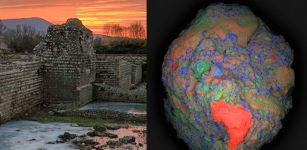 Ancient Riddle Solved – Why Was Roman Concrete So Durable?
Archaeology | Jan 7, 2023
Ancient Riddle Solved – Why Was Roman Concrete So Durable?
Archaeology | Jan 7, 2023 -
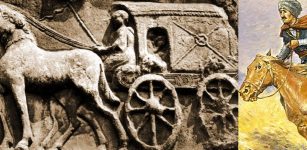 Struggle To Get Mail On Time Has Lasted More Than 5,000 Years – Part 1
Featured Stories | Jul 30, 2017
Struggle To Get Mail On Time Has Lasted More Than 5,000 Years – Part 1
Featured Stories | Jul 30, 2017 -
 Adorable Village Of The Little People In Connecticut
Featured Stories | Jul 25, 2019
Adorable Village Of The Little People In Connecticut
Featured Stories | Jul 25, 2019 -
 Vercingetorix – Visionary Nobleman And Mighty Warrior Who Led Army Of Gallic People Against The Roman Empire
Featured Stories | Feb 10, 2018
Vercingetorix – Visionary Nobleman And Mighty Warrior Who Led Army Of Gallic People Against The Roman Empire
Featured Stories | Feb 10, 2018 -
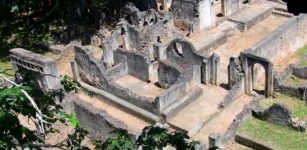 A Researcher’s Life’s Work Uncovers First Ancient DNA From Swahili Civilization
Archaeology | Apr 2, 2023
A Researcher’s Life’s Work Uncovers First Ancient DNA From Swahili Civilization
Archaeology | Apr 2, 2023 -
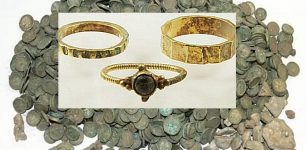 900-Year-Old Coins And Jewelry Unearthed In Polish Village – Could They Belong To A Ruthenian Princess?
Artifacts | Jan 12, 2021
900-Year-Old Coins And Jewelry Unearthed In Polish Village – Could They Belong To A Ruthenian Princess?
Artifacts | Jan 12, 2021 -
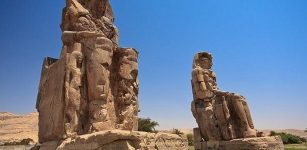 Colossi Of Memnon: Gigantic Stone Statues Guarding The Temple Of Pharaoh Amenhotep III
Civilizations | Jul 13, 2016
Colossi Of Memnon: Gigantic Stone Statues Guarding The Temple Of Pharaoh Amenhotep III
Civilizations | Jul 13, 2016 -
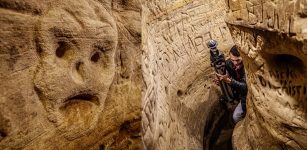 Hidden Treasures Revealed In Unique 3D Rendering Of Robber’s Cave In Nebraska
Archaeology | Dec 11, 2019
Hidden Treasures Revealed In Unique 3D Rendering Of Robber’s Cave In Nebraska
Archaeology | Dec 11, 2019 -
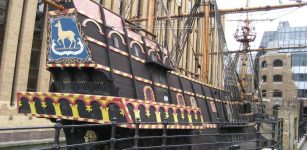 On This Day In History: Sir Francis Drake Sets Sail On His Round-The-World Voyage – On Dec 13, 1577
News | Dec 13, 2016
On This Day In History: Sir Francis Drake Sets Sail On His Round-The-World Voyage – On Dec 13, 1577
News | Dec 13, 2016 -
 Were Other Humans The First Victims Of The Sixth Mass Extinction?
Evolution | Nov 1, 2023
Were Other Humans The First Victims Of The Sixth Mass Extinction?
Evolution | Nov 1, 2023 -
 Ancient City Of Isaura And Zengibar Castle Used By The Hittites, Persians, And Romans
Archaeology | Jun 25, 2020
Ancient City Of Isaura And Zengibar Castle Used By The Hittites, Persians, And Romans
Archaeology | Jun 25, 2020 -
 Keshwa Chaca – Last Suspension Rope Bridge Of Inca People
Ancient Traditions And Customs | Apr 17, 2019
Keshwa Chaca – Last Suspension Rope Bridge Of Inca People
Ancient Traditions And Customs | Apr 17, 2019 -
 Discovery: Massive Gawro Wall Dated To The Antique Age: Was It A Symbolic Or Defensive Structure?
Archaeology | Nov 9, 2019
Discovery: Massive Gawro Wall Dated To The Antique Age: Was It A Symbolic Or Defensive Structure?
Archaeology | Nov 9, 2019




